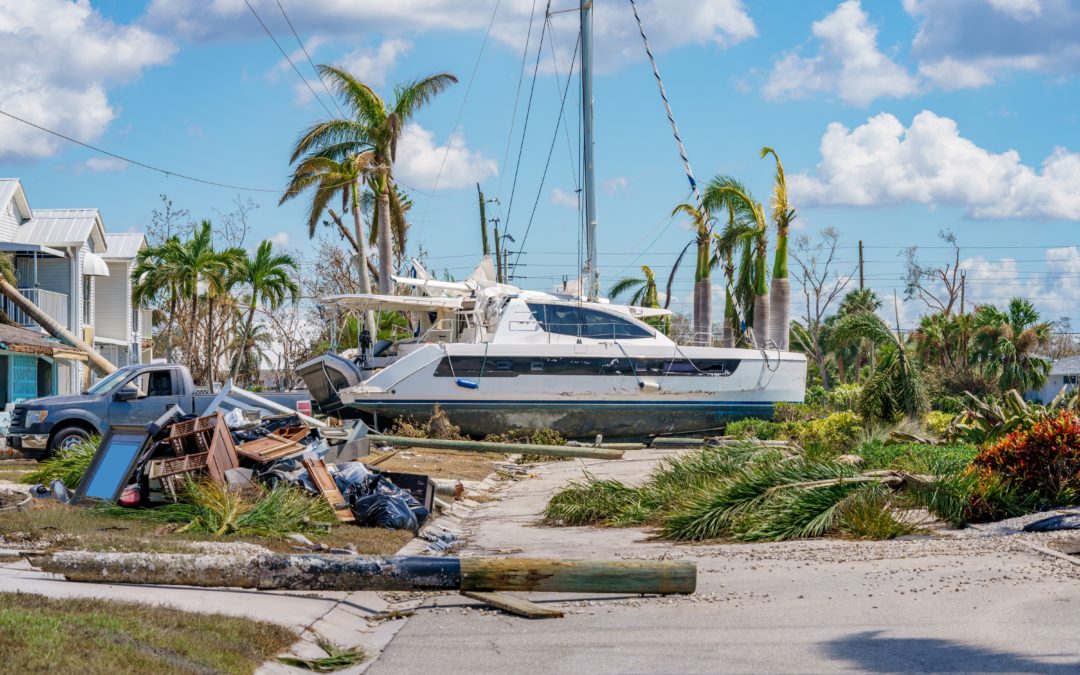
Is Hurricane Ian the New Normal?
The devastation caused in Florida recently by Hurricane Ian is unprecedented. A record-breaking storm surge, a “once in a thousand year” rainfall event, and a storm that will easily go down as the most expensive hurricane to ever hit the state.
On Sept. 26, Ian had top winds of 75 miles per hour (mph). By the next day, Hurricane Ian was sitting at a Category 3 storm with 125 mph winds. Only hours later, Ian had become a strong and massive Category 4. Its 155 mph winds just a couple mph short Category 5 strength. This rapid intensification, in addition to producing stronger storms, make storm preparation and evacuation more challenging.
Since 2005, the rapid intensification of hurricanes has become much more common. The warmer ocean waters that result from climate change create near perfect conditions for hurricanes to gain strength quickly. In addition to Ian, hurricanes Maria, Dorian, Harvey, Ida, and Katrina all experienced rapid intensification.
Warming ocean water and air temperatures are the primary reason these storms are larger in size and bringing record rainfalls. The warmer the air, they more moisture it can hold. This is a very dangerous thing because bigger and stronger hurricanes lead to higher storm surges combined with greater inland flooding from rainfall.
The result is a double whammy that our infrastructure was never designed to handle.
That’s not all. Meteorologists and climate scientists suspect that this same warming is a principle cause of these storms slowing down over land, sometimes just sitting over the same area for hours.
The ultimate example of this was Dorian, a Category 5 hurricane that hit the Bahamas in 2019. Dorian sat over Grand Bahama for 24 hours straight with winds up to 185 mph (stronger than Hurricane Irma) and heavy rainfall. After Dorian finally moved out, Grand Bahama was devastated—leveled in fact. It looked like a nuclear bomb had went off.
Now, while much of Florida is still assessing Ian’s horrific toll on lives, property, and infrastructure, we need to get serious about steps to reduce the odds of another Ian, Dorian, or worse.
The toll in lives lost and disrupted, people displaced, property destroyed, should alone be enough to spur action, but there are other ramifications as well.
Floridians face enormous cleanup and recovery costs, including repair of the power grid, rebuilding of bridges and other damaged infrastructure, and a huge impact to Florida’s already shaky insurance market. All of these costs are ultimately passed on to the public in the form of higher taxes and skyrocketing insurance rates—not just for us, but for our children and grandchildren.
If anyone, at this point, thinks that burying their head in the sand and refusing to address the underlying reasons that Ian was able to wreak such havoc is an option, they are being irresponsible and reckless, which are the opposite of being conservative.
When faced with a similar daunting climate problem, the erosion of earth’s protective ozone layer, President Ronald Reagan faced it head on. He listened to the experts and pushed through an international treaty that phased out the chemicals suspected of causing the problem.
Today, our ozone layer is healing because of Reagan’s leadership and foresight.
We need that same kind of leadership today. We need to do all we can to reduce the greenhouse gas emissions that are warming our atmosphere and our oceans—something conservative leaders like Reagan and his pal Margaret Thatcher were calling for 30 years ago.
For decades, we have largely failed to heed their warning, choosing instead to run away from the challenge, and allowing it to become politicized. As the Bible notes: “A man reaps what he sows.”
In all likelihood, Ian is indeed the new normal. For now. But it is not too late to take steps to make it less normal over time, or to ensure that something even worse doesn’t become the new normal.
There is nothing conservative about burying one’s head in the sand when it comes to climate stewardship—especially along Florida’s scoured Gulf Coast, where many communities are now digging out of it.

Recent Comments